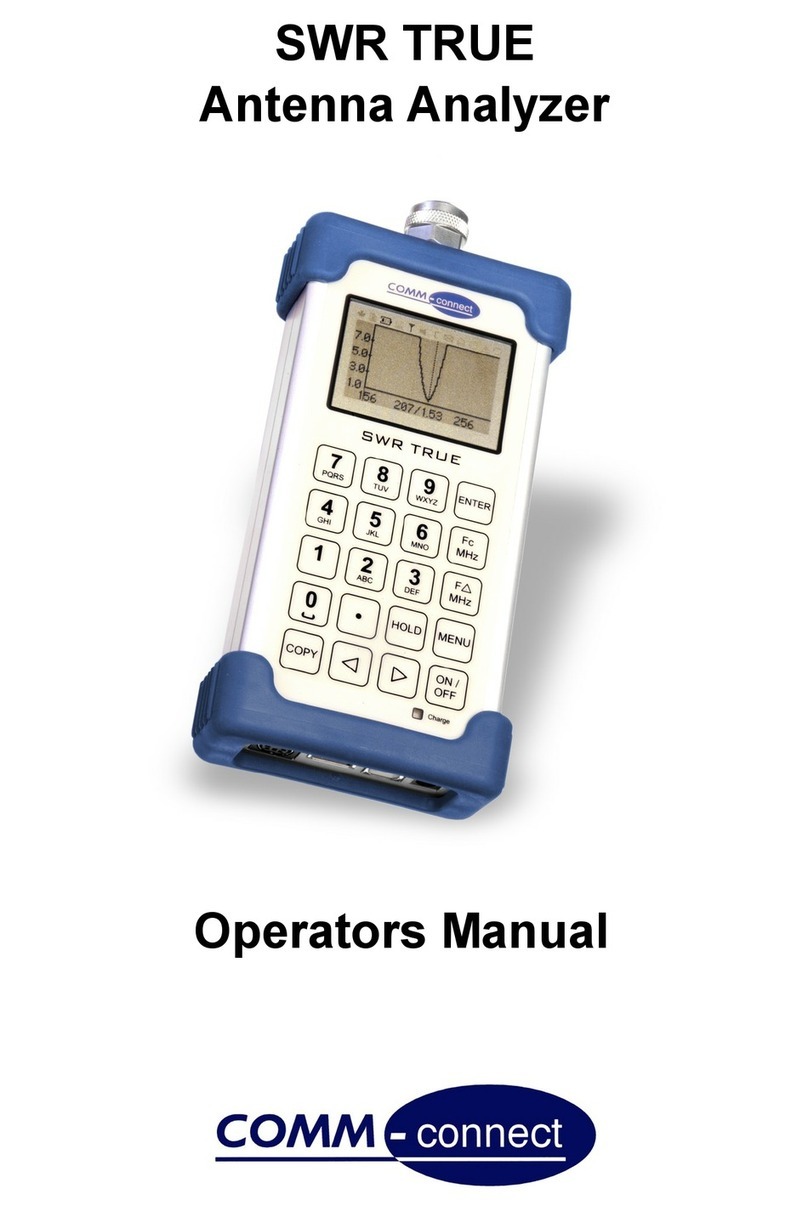
11 12
MAKING MEASUREMENT
Connecting antennas:
Observe the utmost care when connecting antennas via cables , as these cables
can be connected to transmitters and /or power sources! Make sure you have
chosen the antenna you intend to test!! Connection to transmitters and/
or other sources can destroy the instrument or cause hazardous electri- cal
conditions.
When connecting to the “N” female connector on the instrument make sure
you are using either “N” male antenna or cable connector.
If antenna or cable is tted with another type of connector use appropriate
adapter. Please observe that the use of adapters and cable connections of poor
quality may inuence the SWR and give higher readings than the ac- tual
antenna SWR. Once the antenna has been connected to the instrument you
switch the SWR True on and select the relevant frequency band by using
the Fc and FΔ. By sweeping the frequencies of interest while observ- ing the
graphs on the screen you should see VSWR or Return Loss curve. Antennas
are usually designed to have a SWR below a given value within the band for
which it is designed. As an example a GSM 900 antenna could have the follow-
ing specications: Range 890 - 960 MHz SWR less than 2.0:1 typical 1.5:1.
Nearby objects:
When testing SWR on low gain antennas (Gain <3dBd) the inuence from
nearby objects is small when the objects are more than 1⁄2λ away (15 cm
at GSM900). When testing high gain antennas ( e.g. Yagi’s and panel’s) you
should avoid objects in the direction of radiation.
Strong RF elds:
When testing SWR on antennas located in strong RF elds, the reading you
will get on the SWR meter may be incorrect, because the strong RF eld pres-
ent will be indicated as reected power coming from the antenna. If a precise
reading is needed, you must switch o the disturbing source of RF or move the
antenna under test out of the RF eld.
Bandwidth:
Some antennas may need tuning by adjusting the length of an element or by other
means in order to cover the entire band of interest, please refer to antenna manu-
facturers instructions for details.
Duplex operation:
When checking antennas to be used for duplex operation, make sure the antenna
SWR is adjusted for the lowest possible SWR in both receive and transmit band.
General hints:
Always refer to antenna manufacturers specication! Antennas may have more
than one resonance frequency! A very narrow resonance frequency may indicate
resonance of cable instead of antenna resonance (Cable bro- ken or shorted)!
KEEP CONNECTORS CLEAN AND TIGHT!



























